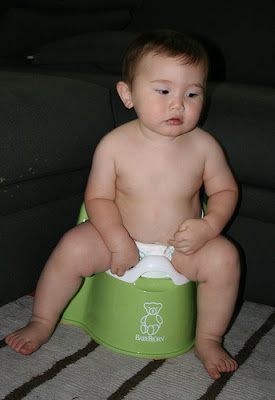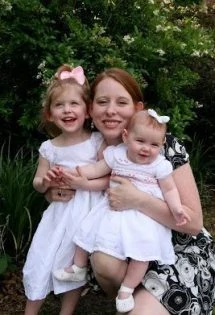Today we continue our potty training mini series as part of our ongoing “The First Years” series that is covering the most precious little years! I’m delighted to have Anne from Quick & Easy, Cheap & Healthy guest posting today! Please pay her blog a visit!
| Image by abbybatchelder |
Guest Post by Anne of Quick & Easy, Cheap & Healthy
Let’s start off with some disclaimers, shall we? First of all, I have only ever potty-trained one child, so I am far from an expert. Not even close, actually.
Secondly, I’ve never read the famous eBook, 3- Day Potty Training; I’ve only read lots of articles and blog posts about it and have had extensive conversations with other moms about it.
Thirdly, and this is the big one: It takes longer than 3 days. Sorry. I know, I know! Three-days and done? Wouldn’t that be awesome?
But no, of course, it couldn’t be that simple. Like anything else in life worth doing, potty training is going to require some effort on behalf of both parent and child, and it usually takes a certain amount of time as well.
Let’s think of the 3-Day Method more in terms of 3 Phases: Pre-Training, Training, and Follow-Up. The 3 days occur in the middle phase (Training) and are the most intense and active portion of the process.
Pre-Training
For the first one and a half years of my oldest son’s life (he’s now three and a half), I did a lot of Googling research on the subject of potty training. I read what seemed like hundreds of articles and blog posts covering all sides of the issue; I browsed through mommy forums all over the internet, learning about the various approaches that real moms tried; I read books and magazines about it; and I observed the successes and failures of all the moms I knew in real life.
For the first one and a half years of my oldest son’s life (he’s now three and a half), I did a lot of Googling research on the subject of potty training. I read what seemed like hundreds of articles and blog posts covering all sides of the issue; I browsed through mommy forums all over the internet, learning about the various approaches that real moms tried; I read books and magazines about it; and I observed the successes and failures of all the moms I knew in real life.
All of this observation led me to the same conclusion over and over again: the moms who described potty training as “easy” had inevitably spent some time (as much as months) pre-training their little ones.
The more I thought about it, the more I realized this made perfect sense. How could we possibly expect a toddler to be intellectually, emotionally, or physically prepared to use the potty when they have never had any experience whatsoever with it? You wouldn’t give a kindergartener a novel to read on the first day of school, would you? No, of course not! First, you teach your little genius the alphabet and phonetic principles, then you start handing them books. Easy ones.
Potty-training is no different. You need to start at the very beginning, with the “alphabet” of bodily functions. You know the oft-repeated advice to start potty-training “when the child is ready”? You can speed that process up with pre-training.
What does pre-training involve?
Talk, talk, and more talk. Even before your child is capable of responding, talk about bodily functions. Talk about where pee and poop come from. Determine what you want your child to call his or her private parts and call them by those names.
Talk, talk, and more talk. Even before your child is capable of responding, talk about bodily functions. Talk about where pee and poop come from. Determine what you want your child to call his or her private parts and call them by those names.
Whenever you change your child’s diaper, mention the contents: “Wow, Baby did lots of stinkies today! Pee-yew!” or “You must have drunk a lot of water; this diaper is very wet with pee-pee today!”. Yes, fascinating conversation. Your child will love it.
Place a child’s potty front and center somewhere. Preferably in the bathroom. Make it easily accessible to your child as soon as they have begun toddling around and climbing onto things. The motor skills needed to climb on and off a potty require some development, so give them plenty of chances!
Before and after diaper changes, and whenever your child shows an interest, offer them the opportunity to climb up on the baby potty and have a seat. And again, talk. Talk about what people do on potties, and how big boys and girls and mommies and daddies don’t do such things in diapers. Talk it up!
Allow your child to observe either yourself or his/her siblings using the potty. Really, this is the easiest way for them to learn exactly what goes on in the toilet and what its purpose is. Demonstration is an essential element of all learning!
As your child’s motor skills improve, give them every opportunity to practice pulling their pants up and down. Potty-training simply cannot be done adequately until this process is learned, so work on it as soon as your child is capable.
The biggest difference between pre-training and real training is the expectation. When pre-training, there is absolutely no expectation that your child will actually suddenly begin going potty on their own in the right place. Pre-training is all about preparing the way, and setting the stage for Phase 2.
*This method is not the same as the 3Day Potty Training Method by Lora Jensen. Please see her site for more information on her method.
Come back tomorrow for Part 2 of the Potty Training in 3 Days Method!
 Anne is the wife to a wonderful, caring husband and mommy to two wildly-tender little boys. She loves all things Jesus, music, natural, nutritional and chocolate. And coffee. She loves coffee. She was born smack dab in the middle of 10 children and loves being able to stand out amongst the big crowd with her corner of the blogosphere, Quick and Easy, Cheap and Healthy, where she blogs about how to make healthy food without losing money, time, energy… or your sanity. You can also follow her on Facebook, Twitter, and Pinterest.
Anne is the wife to a wonderful, caring husband and mommy to two wildly-tender little boys. She loves all things Jesus, music, natural, nutritional and chocolate. And coffee. She loves coffee. She was born smack dab in the middle of 10 children and loves being able to stand out amongst the big crowd with her corner of the blogosphere, Quick and Easy, Cheap and Healthy, where she blogs about how to make healthy food without losing money, time, energy… or your sanity. You can also follow her on Facebook, Twitter, and Pinterest.







Leave a Comment